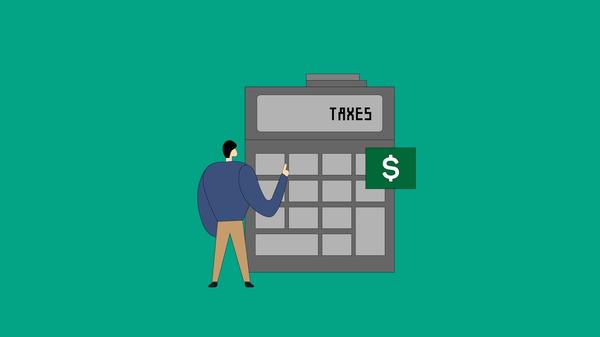In 2014, two recognized accounting boards met to create a new standard for business accounting practices. They were the Financial Accounting Standards Board (FASB) and the International Accounting Standards Board (IASB). Working closely together, they created a new accounting standard called ASC 606 “Revenue from Contracts with Customers” Standard, or “the Standard.” It became effective in 2018.
Standardizing Accounting Methods
Because of differences in the way various companies and types of businesses conducted their accounting, a more standardized means was sought. The new rules sought to level the playing field and enable accountants and others outside the business that needed accurate financial information to make predictions and understand what was really occurring within a company or industry.
Some companies were using various accounting methods which ended up presenting themselves differently to the public than what was happening. At times, there was no deliberate intention to deceive; it simply was susceptible to conveying a false level of success. A company could, for instance, count revenue for items that were sold on paper in one quarter but had no money materialize yet and no product was delivered. This would greatly increase the profit that appeared on the books, potentially greatly increasing one-quarter making the company look very successful. When, in reality, such profit had never been obtained – yet, and there was also the possibility that payment may never come.
The new standard was intended to eliminate this problem and more. It revealed when to count revenue, which amounted to adding it to your books within the same quarter that the products were delivered to the customer and paid for. This method will produce a more accurate record and increase transparency. It will also enable whole sectors to be able to detect highs and lows – which is what investors really want to know.
Recognized Revenue
The Standard recognized that businesses may use one of two types of accounting – cash or accrual. In cash accounting, revenue is recognized whenever cash is received. It does not matter when the goods or services were or will be delivered to the customer.
Recognized revenue occurs only after the contract or agreement has been fulfilled on the part of the seller. The product or service has been produced and delivered to the customer. It is recognized revenue because a specific amount of money is expected in return for having fulfilled the agreement. The seller may use an estimated figure because the money is expected.
The Criteria
Standardizing financial reporting involves determining when money should be included as revenue and when it should not. Five criteria determine when revenue is recognized after goods have been sold. They include:
- The seller has transferred all risks and rewards to the buyer.
- The seller no longer has control over the product delivered to the buyer.
- Payment for the goods has occurred or can reasonably be expected
- A determinable amount can be expected to be received from the buyer.
- The costs involved in generating the product for revenue can be measured.
About Advances
When an advance is received for products or services, it is not counted as revenue. Instead, it is counted as a liability. As such, it should be looked at as being deferred income. This situation reveals the difference between realized income and revenue. Realized income occurs when an advance can be converted to cash or enable the seller to have a claim to cash. It only becomes revenue after the buyer receives the goods.
Contracts and Revenue Recognition
Revenue recognition first requires that an agreement has been made between the seller and the buyer. This agreement can exist orally, written, or even implied – if that is the way your company normally does business. Most often, there will be a written contract in place. The key is that it must be legally enforceable.
Accrual Accounting
Accrual accounting matches a company's expenses with the time that the payment is made. A powerful advantage of this type of accounting is that it enables a company to easily determine projections when similar contracts need to be made and fulfilled. It also lets individuals determine the financial position of a company at a single moment without confusing statistics getting in the way.
The IRS requires that public and large companies use accrual accounting. Smaller companies, those with annual revenue of less than $25 million, can use cash accounting.
The Cash Conversion Cycle
A cash conversion cycle, which is also called an operating cycle, is the time frame involved between purchasing supplies and being able to sell it for cash. This period, which could be as long as a year, is referred to as a company's current liabilities.
The largest part of current liabilities will be unpaid invoices to suppliers. These bills are paid with assets that are used up within one year. They may include items such as accounts payable, debt from bank loans, deferred revenue, dividends, payments on long-term debt, income taxes, and more.
A New Advantage
Once a company has implemented the revenue and revenue recognition system and uses it regularly, it provides the company with a couple of advantages. The accounting method provides a more accurate picture of its current financial state. This enables decision-makers within the company to understand where the company is headed financially and will help enable it to stay out of unnecessary debt.
It will also enable a company to plan accordingly based on its actual financial condition – and not from hopeful but unrealistic projections. Companies in different industries are allowed to use accounting methods that differ from other industries because what will work within one industry may not work well in another. Understanding how companies measure revenue differently from recognized revenue enables investors to better understand the financial stability (or lack of) of a company before making investment choices.
The investment software from Passiv can also help you make better investment decisions. It also cuts the time needed for you to investigate potential investments and it works alongside brokerages such as Ameritrade, Questrade, Interactive Brokers, and Alpaca. It can also help you automate your investments and notify you when more money is available to invest.


